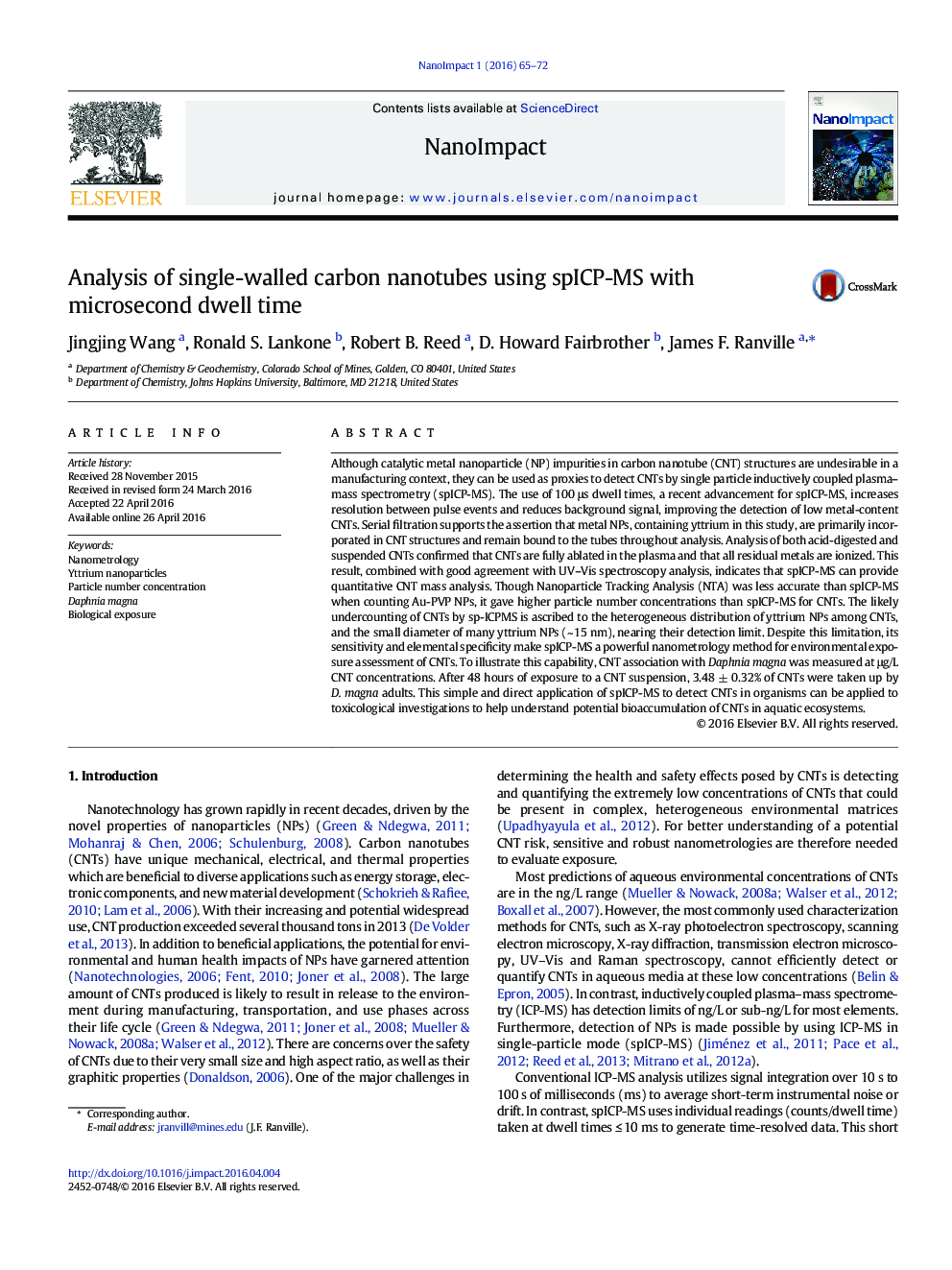| کد مقاله | کد نشریه | سال انتشار | مقاله انگلیسی | نسخه تمام متن |
|---|---|---|---|---|
| 2589396 | 1562025 | 2016 | 8 صفحه PDF | دانلود رایگان |
• First application of microsecond dwell time spICP-MS to CNT detection is demonstrated.
• The new microsecond method is an improvement over the previously published millisecond method for the quantification of CNTs.
• Detection of CNTs in organisms using this improved nanometrology is demonstrated.
Although catalytic metal nanoparticle (NP) impurities in carbon nanotube (CNT) structures are undesirable in a manufacturing context, they can be used as proxies to detect CNTs by single particle inductively coupled plasma–mass spectrometry (spICP-MS). The use of 100 μs dwell times, a recent advancement for spICP-MS, increases resolution between pulse events and reduces background signal, improving the detection of low metal-content CNTs. Serial filtration supports the assertion that metal NPs, containing yttrium in this study, are primarily incorporated in CNT structures and remain bound to the tubes throughout analysis. Analysis of both acid-digested and suspended CNTs confirmed that CNTs are fully ablated in the plasma and that all residual metals are ionized. This result, combined with good agreement with UV–Vis spectroscopy analysis, indicates that spICP-MS can provide quantitative CNT mass analysis. Though Nanoparticle Tracking Analysis (NTA) was less accurate than spICP-MS when counting Au-PVP NPs, it gave higher particle number concentrations than spICP-MS for CNTs. The likely undercounting of CNTs by sp-ICPMS is ascribed to the heterogeneous distribution of yttrium NPs among CNTs, and the small diameter of many yttrium NPs (~ 15 nm), nearing their detection limit. Despite this limitation, its sensitivity and elemental specificity make spICP-MS a powerful nanometrology method for environmental exposure assessment of CNTs. To illustrate this capability, CNT association with Daphnia magna was measured at μg/L CNT concentrations. After 48 hours of exposure to a CNT suspension, 3.48 ± 0.32% of CNTs were taken up by D. magna adults. This simple and direct application of spICP-MS to detect CNTs in organisms can be applied to toxicological investigations to help understand potential bioaccumulation of CNTs in aquatic ecosystems.
Figure optionsDownload as PowerPoint slide
Journal: NanoImpact - Volume 1, January 2016, Pages 65–72
